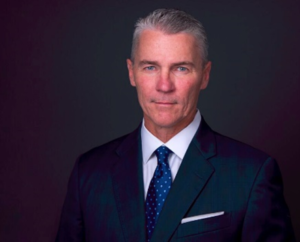Navigating Public Life in the Age of “Influencers” by John Muffler
“The first thing my beloved internet gave me was your address.”
-Joe Goldberg, Netflix series YOU
Selena, Rebecca Schaeffer, and Christina Grimmie are recognizable celebrity names from the entertainment industry. Each was loved and admired by millions but was pursued, then murdered by an obsessed fan. Many more public figures have been stalked and assaulted. The term “public figure” often conjures up images of celebrities, presidents, media figures, and even corporate executives.
History has taught us that such fame has woven the term “at-risk” with “public figure”. With high-profile individuals, we often see elements of security, ranging from bodyguards to handlers, to barriers and other physical security systems.
In this age of social media influencers, the names Jenae Gagnier, Ava Majury, and Andreea Christina may be less recognizable but are equally famous. Jenae and Andreea were each stalked and killed by one of their many fans.
Today, social media influencers are achieving the same level of public recognition as more traditionally famous public figures. Unfortunately, they do not have access to the same level of safety and security.
Ava, a 15-year-old high school student with over 1.2 million followers, would have been the latest influencer murdered by fan-turned-stalker, Eric Rohan Justin, but for the actions of her father. Justin stalked Ava, by following her on TikTok, he showed up in online games with her brothers, manipulated her friendships at school, and messaged her via Snapchat and Instagram. He became furious after he was blocked from her accounts because his requests for photos became too explicit.
Enraged, Justin drove from Maryland to Florida and shot a hole in the family’s front door with a shotgun. Ava’s father, a retired police officer, returned fire, neutralizing the threat.
Being “liked” and “followed” is a way for influencers like Ava, Janae, and Andreea to monetize their fame. There is a fine line between an influencer’s brand and their privacy. To a pursuer, this line is invisible as their perception of accessibility and reality are skewed by continued communication to and from their obsession. Although perceived, to a pursuer the communications are validation of a tangible relationship. This underscores the unfavorable connectivity of the influencer-fanbase association and reminds me of the quote from the character Joe Goldberg, a psychotic stalker in the Netflix series YOU.
The School/Workplace Dilemma
Influencers have regular jobs and go to school, just like Ava. This can be problematic from a school/workplace safety perspective as an influencer now brings their risk level into the school/work environment. If Justin brought that shotgun to the high school, instead of the home, the storyline may have been completely different.
Most pursuers will not advance intentions of harm to their target, which compounds the risk. In other words, hunters hunt – they do not want to alert their prey that they are coming. Like a doctor who can only provide the right treatment based on a proper diagnosis, those responsible for security in the school and workplace can only be effective in threat mitigation by considering known factors.
Preparing Your Environment for the Influencer
Aside from the personal danger that is all around them, their notoriety has the potential for day-to-day disruption of normal work/learning activities. It can also impact already depleted resources. Unfortunately, safety and security professionals are often challenged in obtaining pertinent information to be assessed because of legal and privacy rights.
Understanding and preparing for the influencer in your environment begins with communication. There is a technology gap between parents and children/employees and employers, whose social media activities may be impossible, or illegal, to monitor. Bridging this gap is critical.
Bruno Dias is the Director of Safety, Security, and Threat Assessment for Mansfield ISD, a school district with over 35,000 students. Seeing that his student’s desire to communicate via social networking was so strong, as well as navigating privacy issues, Dias implemented a “digital technology night” to increase awareness among staff, students, parents, and the influence of possible dangers.
According to Dias, “The benefits of digital instructional aides are boundless, but so are the challenges.” School districts that receive e-rate funding must reduce student exposure to inappropriate, obscene, or harmful content, per the CIPA Act. Dias’ district balances privacy with student wellness by leveraging a system that alerts safety teams when content indicative of violence, bullying, obscenity, or self-harm is detected.
The alerts are used to teach, intervene, and support rather than punish. Dias states, “Despite our best efforts, kids are becoming very crafty with VPN usage to bypass content blockers when using our network and wi-fi systems.
They are also using Google documents to type and delete messages in real-time hoping to avoid detection.”
“Little effort is needed to notice the benefits technology brings to young adults but understanding how it can be misused requires ongoing effort by parents and guardians.”
Mansfield ISD offers reporting tools that children can leverage to report bullying, harassment, and other concerning behaviors. While their threat assessment tools bring value, the best solution, he says, “is to educate and promote reporting of concerning behaviors by students.”
A Few Strategies
All states have laws that make stalking a crime. Unfortunately, they are not always enforced, or the victim is given incorrect advice (by family, friends, law enforcement, attorneys, etc.) on safety or legal procedures. It is incumbent on the influencer-and if a minor, their guardian-to educate themselves on stalking behavior, and organize and document communications with the pursuer. This will help identify the pursuer’s behavioral changes as well as provide documented evidence in support of legal proceedings.
Assessing and managing threats and inappropriate communication and contacts are never cookie-cutter. Each stalking case requires individualized attention and case management, all with the hope of detaching the pursuer from the target.
Strategies I have implemented included watching and waiting, not necessarily immediately blocking the pursuer from communicating (understanding that this may be necessary). In my experience, blocking communication may leave the pursuer with nothing else to do but show up on the victim’s doorstep.
If a victim were to allow the communications to continue and disengage, we have seen that many pursuers often transfer their attention elsewhere. Understandably, none of these decisions are easy to make for the victim, nor are they for the assessor to recommend.
Final Points
Personally identifiable information (PII), such as a home address and phone number, are readily available online. Laws have been slow to catch up to the information age as it relates to privacy and safety. Often, privacy laws such as the Daniel Anderl Act, named after the murdered son of U.S. District Court Judge Esther Salas, come after privacy information was already exploited by a pursuer.
In support of these new public figures, social media companies need to be proactive and provide safety and security education and training, at a minimum. There becomes a symbiotic financial relationship between these two parties solely based on fame. While I am not an attorney, it is reasonable to foresee a “duty to care” case headed to the courts.
I hope the tips I provided help not just victims but those seeking ways to lessen, or stop, threatening behavior from moving further down a pathway to violence. ❦

About the Author
John Muffler, MS, CTM, Principal of Aequitas Global Security, LLC, held several leadership positions for the U.S. Marshals Service at the local and national levels. He is the Senior Advisor, MOSAIC Threat Assessment Systems, Gavin de Becker & Associates, assisting in the development of threat assessment programs for public figures, schools, workplaces, and victims of domestic violence.
A global keynote speaker on safety and security, he assesses risk for clients around the world, providing pragmatic solutions to high-stakes matters.
John has been published dozens of times in legal and law enforcement magazines on targeted violence, situational awareness, and threat assessment. He was accepted into the Department of State’s Fulbright Specialist Program, is certified in threat management through the Association of Threat Assessment Professionals, and serves on an Executive Board for the International Association of Chiefs of Police’s IMPACT Section.
An alum of Naval Postgraduate School’s Executive Leaders Program, he serves on the faculty of national professional organizations, is a consultant for the National Council of Juvenile and Family Court Judges domestic violence educational program, and assisted in the creation of the Department of Homeland Security’s active shooter preparedness workshops.
